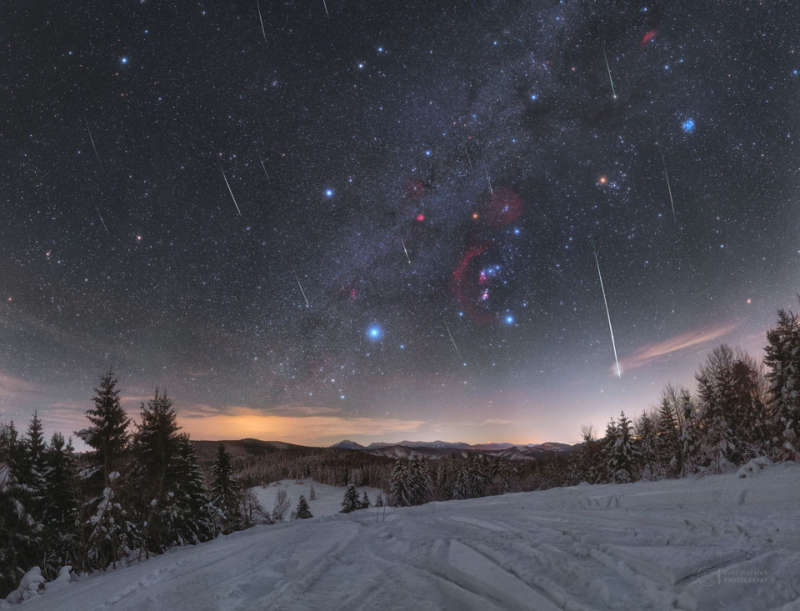Credit & Copyright: Petr
Horálek
Explanation:
Why are these meteor trails nearly
parallel?
Because they were all shed by the
same space rock and so can be
traced back to the same direction on the sky: the
radiant of the
Quadrantid
Meteor Shower.
This direction used to be toward the old constellation of
Quadrans Muralis,
hence the name Quadrantids, but when the
International Astronomical Union formulated its
list of modern constellations in 1922,
this constellation
did
not make the list.
Even though the
meteors are now considered
to originate from the recognized
constellation of Bootes,
the old name stuck.
Regardless of the designation, every January the Earth moves through a
dust stream and bits of this
dust glow as meteors as they heat up in
Earth's
atmosphere.
The featured
image composite was taken on January 4 with a picturesque snowy
Slovakian
landscape in the foreground, and a
deep-exposure sky prominently featuring the constellation
Orion in the background.
The red star
Betelgeuse
appears unusually dim --
its fading over the past few months is being
tracked by astronomers.
Teachers:
APOD in the Classroom
1999 2000 2001 2002 2003 2004 2005 2006 2007 2008 2009 2010 2011 2012 2013 2014 2015 2016 2017 2018 2019 2020 2021 2022 2023 2024 2025 |
Yanvar' Fevral' Mart Aprel' Mai Iyun' Iyul' Avgust Sentyabr' Oktyabr' Noyabr' Dekabr' |
NASA Web Site Statements, Warnings, and Disclaimers
NASA Official: Jay Norris. Specific rights apply.
A service of: LHEA at NASA / GSFC
& Michigan Tech. U.
|
Publikacii s klyuchevymi slovami:
Kvadrantidy - meteor shower - Orion - Orion
Publikacii so slovami: Kvadrantidy - meteor shower - Orion - Orion | |
Sm. takzhe:
Vse publikacii na tu zhe temu >> | |
